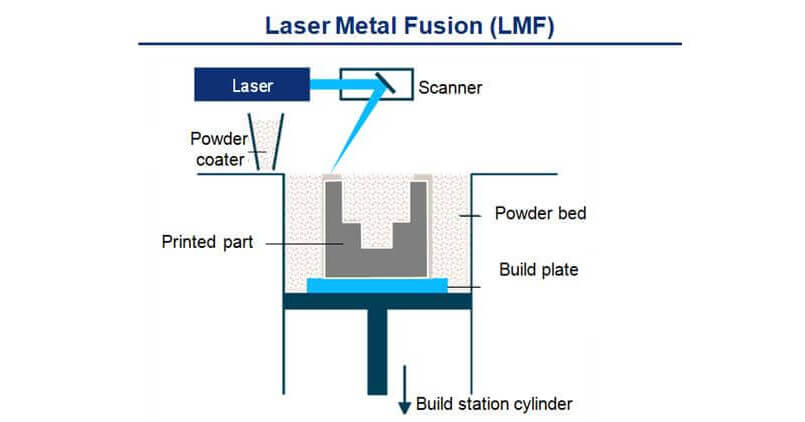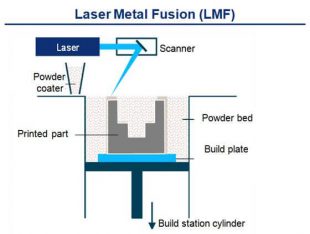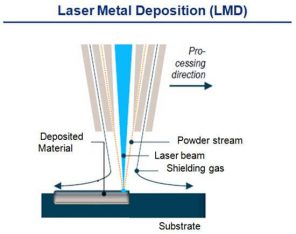Additive Manufacturing Basics Related to Metal Fabricators

 LMF (commonly described as 3D printing) can produce very finely detailed structures at high resolution and surface quality at a part complexity that is unmatched by any form of subtractive manufacturing. In this process a part’s geometry is sliced into very thin layers (typically 20-40 microns thin) and then built up, layer by layer. For each layer, powder is added onto the structure below and then the feature is welded to the existing structure below it. After, the plate is precisely lowered by the same amount as the thickness of layer. Powder is applied and the process is repeated until the part is complete. The result is a 100% welded part that is surrounded by powder; hence the term powder bed. Compared to other additive manufacturing methods LMF offers superior accuracy and quality.
LMF (commonly described as 3D printing) can produce very finely detailed structures at high resolution and surface quality at a part complexity that is unmatched by any form of subtractive manufacturing. In this process a part’s geometry is sliced into very thin layers (typically 20-40 microns thin) and then built up, layer by layer. For each layer, powder is added onto the structure below and then the feature is welded to the existing structure below it. After, the plate is precisely lowered by the same amount as the thickness of layer. Powder is applied and the process is repeated until the part is complete. The result is a 100% welded part that is surrounded by powder; hence the term powder bed. Compared to other additive manufacturing methods LMF offers superior accuracy and quality.
 LMD (or DMD, direct metal deposition) has higher deposition rates and can add structures to existing components, but is limited in complexity when compared to LMF. With this process the powder is blown through a nozzle into the melt pool generated by a laser on the substrate. By moving the processing head, a bead is welded onto the structure below. A surface or even an entire structure can be generated in this way. LMD is used in a broad range of applications, from adding hard wearing coatings to repair work and structure buildup.
Both the LMF and LMD processes are common in many industries including, medical/dental, tool and die, consumer goods, energy, aerospace, R&D and automotive. Considering the fact that these processes require metal powders and a laser to make a solid part, users need to have a broad materials, software and process knowledge background to understand the complexity of the entire process chain. From here, potential users should learn the process basics, capabilities and limitations of each, and the required knowledge or equipment that they would need to know as newcomers to the additive manufacturing world. Although this research takes time, it is well worth the efforts.
LMD (or DMD, direct metal deposition) has higher deposition rates and can add structures to existing components, but is limited in complexity when compared to LMF. With this process the powder is blown through a nozzle into the melt pool generated by a laser on the substrate. By moving the processing head, a bead is welded onto the structure below. A surface or even an entire structure can be generated in this way. LMD is used in a broad range of applications, from adding hard wearing coatings to repair work and structure buildup.
Both the LMF and LMD processes are common in many industries including, medical/dental, tool and die, consumer goods, energy, aerospace, R&D and automotive. Considering the fact that these processes require metal powders and a laser to make a solid part, users need to have a broad materials, software and process knowledge background to understand the complexity of the entire process chain. From here, potential users should learn the process basics, capabilities and limitations of each, and the required knowledge or equipment that they would need to know as newcomers to the additive manufacturing world. Although this research takes time, it is well worth the efforts.
View the video below to learn more about the TruPrint 100 from TRUMPF and hear more from Frank at FABTECH 2016 on Thursday, Nov. 17 during session F43: Laser Metal Fusion and Laser Metal Deposition for Additive Manufacturing. Session details. [x_author title=”About the Author”]















